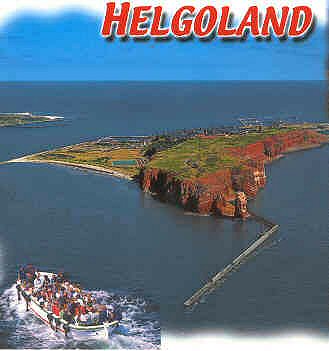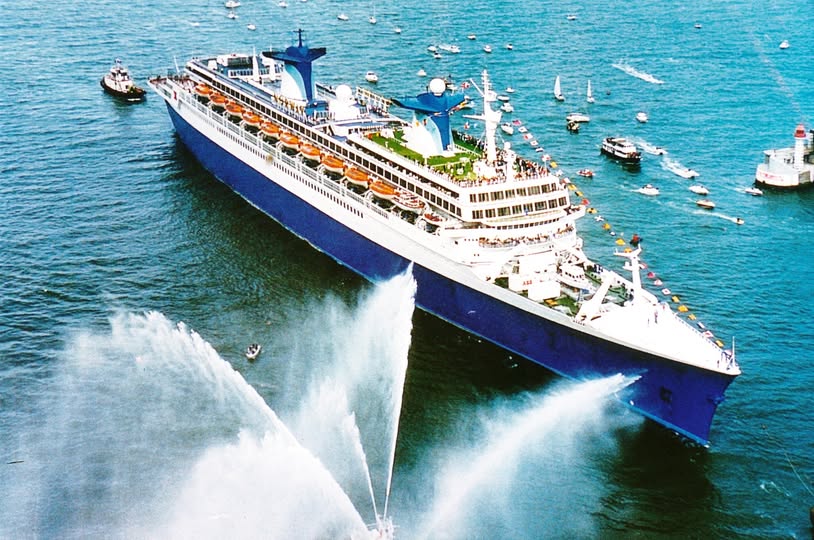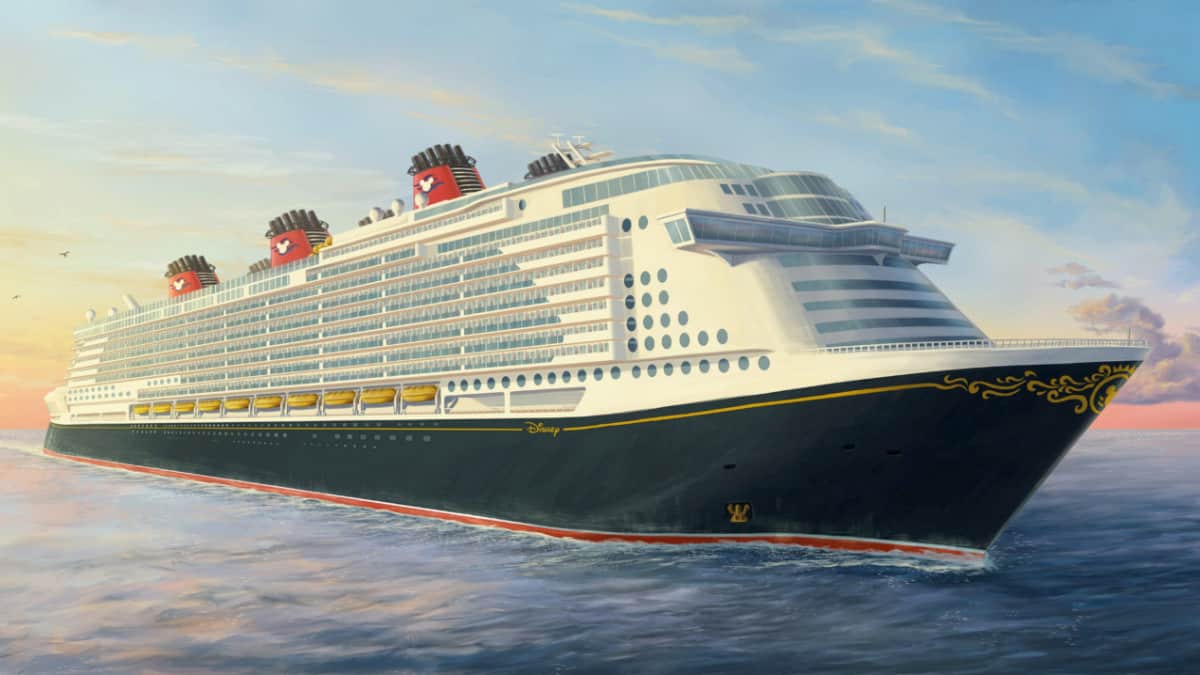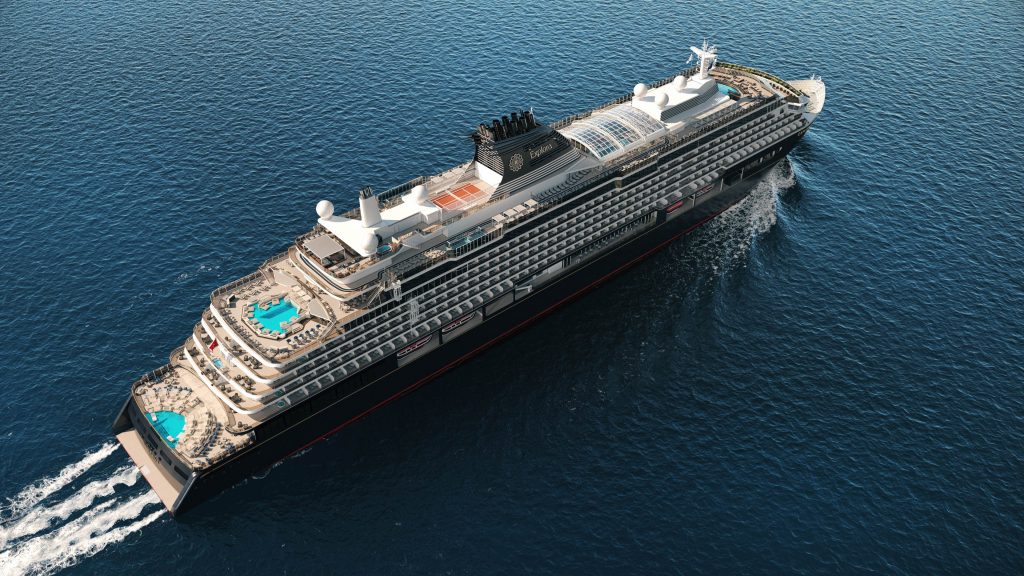Before the second world war, the two largest German passenger shipping companies, Norddeutscher Lloyd and Hamburg Amerika Line both had ships running from the main land to the small isle of Helgoland. Helgoland is situated in the German Bight, in the southeastern corner of the North Sea, 69 km sailing distance from Cuxhaven. It has a population of around 1250. When the war had ended, their interest in this service was over as they focussed on their deep sea passenger services to restore them to their former glory.
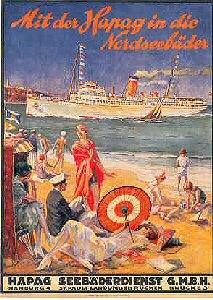
HADAG-Lloyd, a company owning small vessels like harbour ferries and excursion boats, took over the service to Helgoland in 1952. Helgoland had been partly destroyed during the war and there was absolutely nothing to offer passengers there. Quickly, the most necessary facilities were restored. Before, HADAG’s ship, the Burgermeister Ross only circumnavigated the island on its way from Hamburg/ Cuxhaven to Hornum on the isle of Sylt. Now the Burgermeister Ross could actually call at Helgoland.
The service proved very popular and HADAG decided to order a newbuilding, which was delivered in 1955. Wappen von Hamburg as she was called, measured 2500 GRT and could carry 1600 passengers. She continiously attracted full passenger loads and it didn’t take HADAG very long to order a second almost identical vessel, the Bunte Kuh. She joined her fleetmate in 1957.

Wappen von Hamburg (1965)
Both vessels low speed proved to be a drawback, as passengers had very limited time at Helgoland, and HADAG chartered additional tonnage to serve the island from Cuxhaven allowing Wappen von Hamburg and Bunte Kuh to sail directly to Helgoland from Hamburg, thus saving time and making it possible for passengers to have a longer stay at the isle of Helgoland.

In 1960, HADAG suddenly sold Wappen von Hamburg to a Greek shipping company Nomikos and after the vessel was rebuilt in Germany for cruise service she left for Greek waters as Delos and quickly earned herself a high reputation. Later she was sold again and sailed as Polar Star in northern waters. This was followed by a short stint in Mexican waters as Tropic Star. After another change of ownership, the Xanadu as she was now called, was arrested for debt. She past from one owner to another and never saw active service again. Until June 2005 nothing happened to her (apart from a name change to Faithfull and then Xanadu 2 and several plans that did not come to fruition like operating her as a hospital ship in the Caribbean etc.) and she slowly deteriorated being laid up. Suddenly she was sold and in September 2005 she has left Los Angeles under tow to Alameda, California to undergo conversion to a private yacht. Soon afterwards, she was renamed to Faithful and plans changed to moor her in San Francisco as a floating attraction under the name of Aurora. Although volunteers started work to restore her, her current status is not known.
Two years later, Bunte Kuh was also sold to a Greek company, Sun Lines who rebuilt her to the cruise vessel Stella Solaris. In 1971 she was sold to the Sjeik of Quatar who used her as his private yacht Naief.

As a replacement for the Bunte Kuh, in 1963 the Helgoland was taken into service. She sailed on the route to Helgoland for just 4 years when she was chartered out as a hospital ship in Vietnam which lasted until 1972. After her return she was immediately sold to Stena Line and served as a ferry for a short time before she passed on to new charterers in 1974 (she was bought two years later): KG Seetouristik aus Flensburg. She was renamed Baltic Star and sailed on so called Butterfahrten until 2000 (!), day trips where passengers can buy duty free goods on board. After a year in lay up she was acquired by Latin Cruises and after the addition of 46 cabins, the Galapagos Legend as she is now called, today still cruises in the Galapagos Isles region.

In the mean time, Wappen von Hamburg II was delivered by Blohm & Voss to HADAG in 1962. She started sailing on the familiar route from Hamburg via Cuxhaven to Helgoland in the summer season and was chartered out for cruise and ferry service in the winter.
Surprisingly, another Wappen von Hamburg III was ordered in 1965 already. Wappen von Hamburg II was sold and from that moment on traded as a ferry for new owners Stena Line. Wappen von Hamburg III was larger than her predecessors: she measured 4500 GRT, carried 1800 passengers and could easily make over 20 knots. In winter, Wappen von Hamburg III could sail as a cruise vessel, as to her 51 cabins could be added another 40 cabins. One winter she even went as far afield as the Caribbean as the Lucaya, but this venture wasn’t a great succes and it was not repeated the following years. Instead she was given another, stationary task: for several winters she served as a floating restaurant and hotel ship at the St. Pauli Landungsbrucke in Hamburg.

The former Helgoland day cruiser Wilhemshaven in August 2005 at the Mariotti ship yard in Genova where she was rebuilt into the ferry Leviathan for Italian Argo Ferries
In 1982, HADAG ended the Helgoland-service because of financial difficulties and Wappen von Hamburg III was laid up and offered for sale. It wasn’t until 1984 before a buyer was found: KG Seetouristik from Flensburg. After removal of all but a dozen cabins, she resumed service to Helgoland, now based at Cuxhaven (only in July and August she occaisionally departed from Hamburg).
In the mean time, Wappen von Hamburg II, after her sale to Stena Line was used on various ferry services in Norway and Sweden. However a few years later when HADAG had chartered out their Helgoland for long term service in Vietnam as a floating hospital and they were left without suitable tonnage for the Cuxhaven-Helgoland service, Stena sold the Wappen von Hamburg II back to HADAG in1966. She was renamed Alte Liebe.

Sadly, together with her fleetmate Wappen von Hamburg III, Alte Liebe was laid up in 1982 as her owners HADAG-Lloyd got into financial difficulties. She was sold in 1984 to Reederei Oltman from Bremen, was renamed Helgoland and was employed on the Bremerhaven-Helgoland service. In 1986, Oltman sold its Helgoland service to Reederei Warrings, who continiously employed the Helgoland on this route until 1997. Then, because of disappointing passenger loads, she was replaced by a smaller ship until 2000 when the interest for day trips to Helgoland suddenly grew. In 2003 she was sold to Fordereederei Seetouristik aus Flensburg and again became the fleetmate of Wappen von Hamburg III.
However, then history repeated itself: Helgoland has been laid up again in 2004 in Bremerhaven because of dwindling passenger loads and she has been replaced by the same vessel that took over in 1997, the Atlantis. Unfortunately, Atlantis broke down in 2005 with serious engine problems and the Helgoland service has been carried out with fast ferries the remainder of the season.

Helgoland (ex Wappen von Hamburg II) has been sold in the summer of 2005 to a Dutch investment firm which had plans to use her as the party ship Supper Clubcruise 2 on cruises in the Mediterranean in the summer of 2007 afer she has been converted to a cruise ship in Turkey.
As more and more passengers choose for the faster catamarans which reach Helgoland in half the sailing time, it remains to be seen how long Wappen von Hamburg III, Germany’s largest Seebaderschiff can soldier on. She celebrated her 40th birthday in 2005 and still was in remarkably good shape. Although rumours circulated she was on the sales list also, I was very pleased to see her schedule for 2006 published on the internet. In fact she did complete the 2006 season on the Cuxhaven – Helgoland service but then FRS replaced her with the much cheaper to operate Atlantis which was chartereed from reederei Cassen Eils.
Wappen von Hamburg III didn’t fare well, she was sold to British Mercator Shipping which wanted to convert the ship to a luxury cruiseship for 36 passengers. Renamed Mercator II, she was relocated to Bremerhaven where her superstrucure was removed and her interior compeltely gutted. The project was abandoned in 2008 and what was left of er was towed end of 2010 to Esbjerg where she was scrapped.

In 2005, Atlantis was chartered by FRS from Cassen Eils to take over the Bremerhven – Helgoland route from the laid up Helgoland, but in mid seaon, she suffered serious engine damage and had to be withdrawn. She was replaced by Funny Girl, but was back in service the next year. This lasted until 2015, when she was laid up. A year later Atlantis sailed to Rotterdam, where she was renamed Atlantic and was punt on the sales list. Soon, she was sold to Russel Ventyures, a firm located on the Seychelles. However, she was sold again soon thereafter to A Greek line, reflagged to Greece and now sails for Cretan Daily Cruises as Atlantis again. Have a look at: http://www.cretandailycruises.com/ourships.en.html

Momentarily, the main shipping line still active on the Helgoland route is Cassen Eils. Cassen Eils was founded in 1952 by captain Cassen Eils and his business partner Ludwig Visser. The company sailed to Helgoland and operated so called Butterfahrten (tax free trips) in the Baltic, but this ended when tax laws changed and the company focussed on Helgoland from then on. In 2010, AG EMS, also active on the Helgoland run, took over Cassen Eils but the company kept operating under its own name. A new vessel was taken into service in 2015, named Helgoland (of course…), a modern vessel carrying 1060 passengers. Being state-of-the-art and environmental friendly, she runs on LNG (liquified natural gas) and was built with the help of subsidies from the European Union. She sails year round on the Cuxhaven – Helgoland route. Being 83 m long, there are 8 lounges on 3 decks. A 10-ton crane on the foredeck enables her to load freight, general cargo or containers. Cassen Eils operates 6 ships, apart from Helgoland also Funny Girl, Flipper, Fair Lady, Wega II and Atlantis sailing to Helgoland and the isle of Neuwerk from Busum, Cuxhaven and Bremerhaven, and also on excursion trips.

